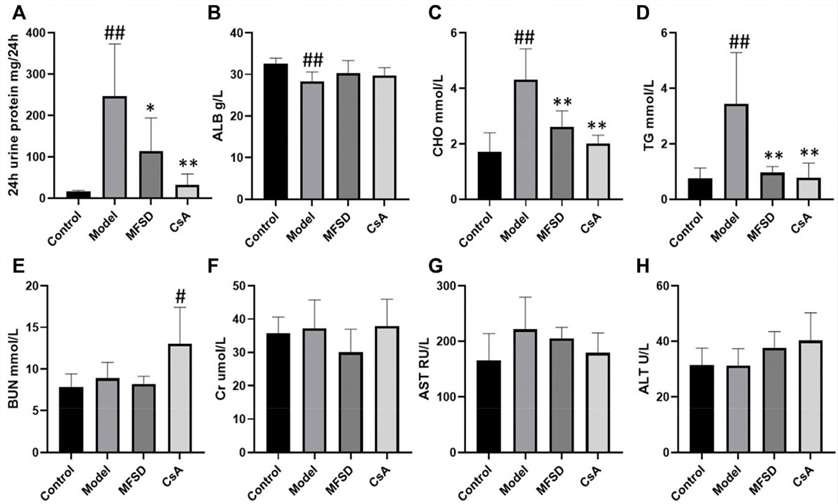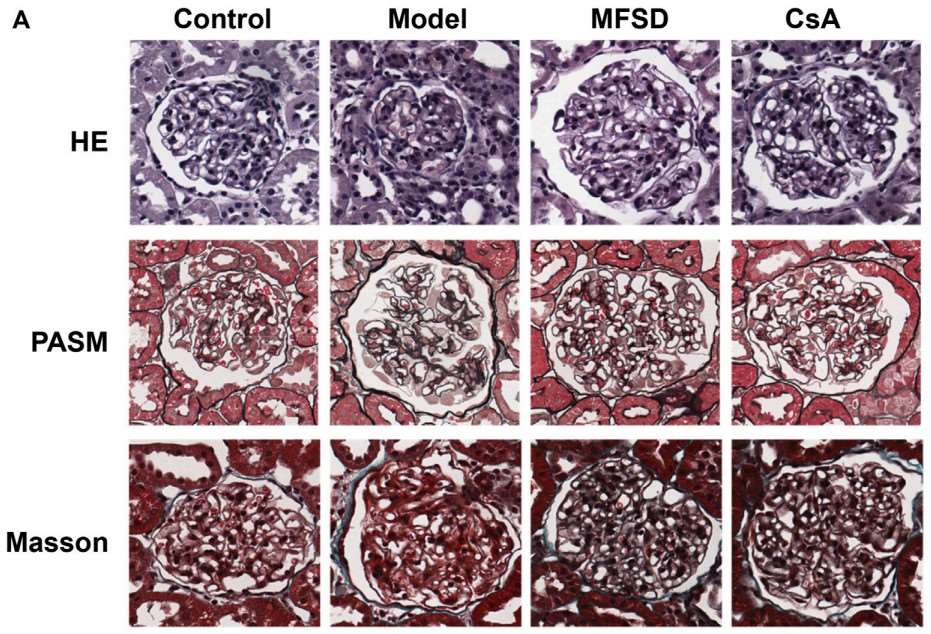- You are here: Home
- Disease Models
- Urology Disease Models
- Passive Heymann Nephritis (PHN) Model
Disease Models
- Oncology Models
-
Inflammation & Autoimmune Disease Models
- Rheumatoid Arthritis Models
- Glomerulonephritis Models
- Multiple Sclerosis (MS) Models
- Ocular Inflammation Models
- Sjögren's Syndrome Model
- LPS-induced Acute Lung Injury Model
- Peritonitis Models
- Passive Cutaneous Anaphylaxis Model
- Delayed-Type Hypersensitivity (DTH) Models
- Inflammatory Bowel Disease Models
- Systemic Lupus Erythematosus Animal Models
- Asthma Model
- Sepsis Model
- Psoriasis Model
- Atopic Dermatitis (AD) Model
- Scleroderma Model
- Gouty Arthritis Model
- Carrageenan-Induced Air Pouch Synovitis Model
- Carrageenan-Induced Paw Edema Model
- Experimental Autoimmune Myasthenia Gravis (EAMG) Model
-
Cardiovascular Disease Models
- Surgical Models
- Animal Models of Hypertension
- Venous Thrombosis Model
- Atherosclerosis model
- Cardiac Arrhythmia Model
- Hyperlipoidemia Model
- Doxorubicin-induced Heart Failure Model
- Isoproterenol-induced Heart Failure Model
- Arterial Thrombosis Model
- Pulmonary Arterial Hypertension (PAH) Models
- Heart Failure with Preserved Ejection Fraction (HFpEF) Model
-
Neurological Disease Models
- Alzheimer's Disease Modeling and Assays
- Seizure Models
- Parkinson's Disease Models
- Ischemic Stroke Models
- Acute Spinal Cord Injury (ASCI) Model
- Traumatic Brain Injury (TBI) Model
- Hypoxic-Ischemic Encephalopathy (HIE) Model
- Tourette Syndrome (TS) Model
- Amyotrophic Lateral Sclerosis (ALS) Model
- Huntington's Disease (HD) Model
- Intracerebral hemorrhage (ICH) Models
- Pain Models
- Metabolic Disease Models
- Liver Disease Models
- Rare Disease Models
- Respiratory Disease Models
- Digestive Disease Models
-
Urology Disease Models
- Cisplatin-induced Nephrotoxicity Model
- Unilateral Ureteral Obstruction Model
- 5/6 Nephrectomy Model
- Renal Ischemia-Reperfusion Injury (RIRI) Model
- Diabetic Nephropathy (DN) Models
- Passive Heymann Nephritis (PHN) Model
- Adenine-Induced Chronic Kidney Disease (CKD) Model
- Kidney Stone Model
- Doxorubicin-Induced Nephropathy Model
- Orthopedic Disease Models
- Ocular Disease Models
- Skin Disease Models
- Infectious Disease Models
Passive Heymann Nephritis (PHN) Model
For the comprehensive screening, rigorous testing, and thorough evaluation of new drugs and innovative formulations, Creative Bioarray provides the Passive Heymann Nephritis (PHN) model. This model is specifically designed to simulate human nephritis in rats, offering a reliable platform for researchers and pharmaceutical companies to assess the efficacy and safety of their compounds.
The PHN model is an invaluable tool for studying Membranous Nephropathy (MN), a leading cause of nephrotic syndrome in adults. This model closely simulates human MN, featuring subepithelial immune deposits that cause membranous thickening of the glomerular capillary wall. By inducing disease with heterologous antibodies, the PHN model progresses through a heterologous phase, where an initial immune response is mounted, followed by an autologous phase characterized by the host's immune response to deposited antibodies. This model's advantages include its ease of induction, rapid onset of disease, and pathological similarity to human MN, making it ideal for investigating the disease's mechanisms and testing potential therapies.
Our Passive Heymann Nephritis (PHN) Model
- Available Animal
Rat
- Modeling Method
After acclimation, the rats in the control group are injected intravenously with normal saline, while the rats in the model group are injected intravenously with anti-Fx1A serum.
- Endpoints
- Proteinuria
- Serum analysis: BUN, creatinine
- Histology analysis: H&E staining, Masson staining, PAS staining
- qPCR or Western blot
- Other customized endpoints
Example Data
 Fig. 1 The effect of MFSD on the urine protein and serum biochemical indicators in PHN rats. (A) The contents of 24 h urine protein excretion in the last week, (B) The levels of ALB in serum, (C, D) The levels of TC and TG in serum, (E, F) The levels of BUN and Cr in serum, (G,H) The levels of ALT and AST in serum. (Gao et al. 2022)
Fig. 1 The effect of MFSD on the urine protein and serum biochemical indicators in PHN rats. (A) The contents of 24 h urine protein excretion in the last week, (B) The levels of ALB in serum, (C, D) The levels of TC and TG in serum, (E, F) The levels of BUN and Cr in serum, (G,H) The levels of ALT and AST in serum. (Gao et al. 2022)
 Fig. 2 MFSD ameliorated glomerular pathomorphological in PHN rats. Representative renal pathological staining images of different groups. Top, the images of renal tissues by HE staining were obtained under a light microscope, Middle and bottom, images of renal tissues by PASM staining and Masson staining were obtained under a light microscope. (Gao et al. 2022)
Fig. 2 MFSD ameliorated glomerular pathomorphological in PHN rats. Representative renal pathological staining images of different groups. Top, the images of renal tissues by HE staining were obtained under a light microscope, Middle and bottom, images of renal tissues by PASM staining and Masson staining were obtained under a light microscope. (Gao et al. 2022)
Quotation and Ordering
Creative Bioarray offers a diverse range of well-characterized in vivo disease models, along with various administration routes and clinically significant endpoints, to meet the specific requirements of your urology discovery projects. If you are interested in our services, please do not hesitate to contact us at any time or submit an inquiry to us directly.
References
- Jefferson, J.A., et al. Experimental Models of Membranous Nephropathy. Drug Discov Today Dis Models, 2010;7(1-2):27-33.
- Gao, Y., et al. The ameliorative effect of mahuang fuzi and shenzhuo decoction on membranous nephropathy of rodent model is associated with autophagy and wnt/β-catenin pathway. Frontiers in Pharmacology, 2022, 13: 820130.
For research use only. Not for any other purpose.

